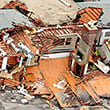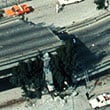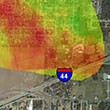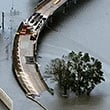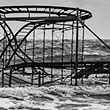Disaster Mitigation
Disaster Mitigation
Architects are all about building things. But in today’s world, they also must think about how to keep buildings and communities standing in the face of natural disasters, and how to rebuild when disaster strikes.
In recent years, hurricanes, tornadoes, earthquakes, floods, and other natural disasters have wiped out buildings and sometimes even entire communities in urban and rural environments, in both coastal and inland areas.
In response, organizations such as the American Institute of Architects (AIA) and the Federal Emergency Management Agency (FEMA) are preparing for inevitable catastrophes by evaluating areas at risk, shoring up building codes to reduce or prevent damage, and creating preparedness plans to help communities be more resilient in the aftermath of a disaster.
By retrofitting existing buildings, establishing more consistent building codes (and local standards suited to local risks), working through various “what if” scenarios, and putting plans in place for repairing and rebuilding when necessary, the architecture and building community hopes to improve readiness for – and response to – inevitable natural disasters.


